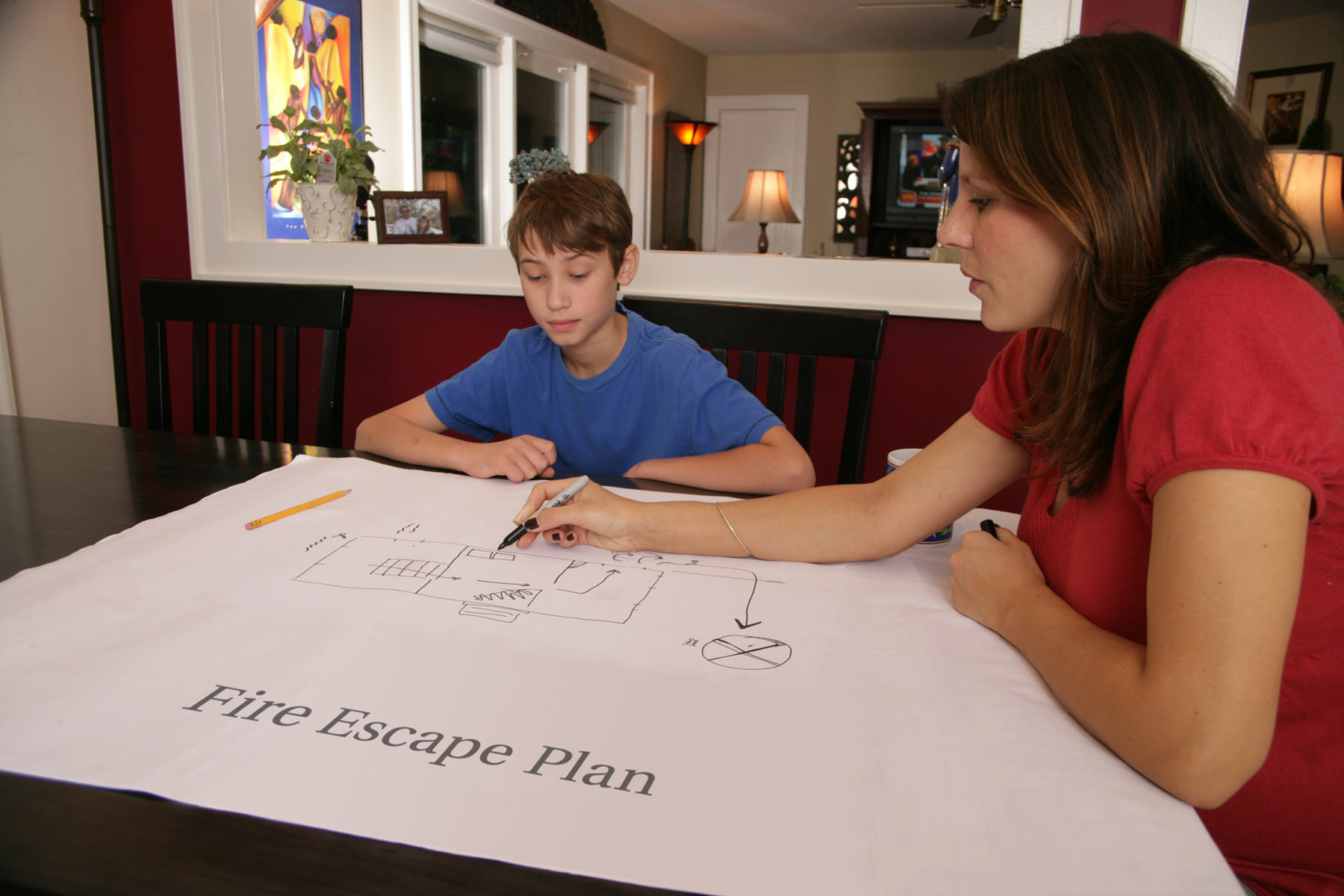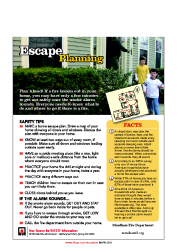The National Fire Protection Association (NFPA) estimates that approximately 80 percent of all fire deaths in the United States and Canada occur in the home. Roughly 11 people per day, die in home fires in the U.S. and Canada. Many lives can be saved if people react immediately when a fire alarm sounds. Once a fire starts, there’s no time to develop a plan. The NFPA urges everyone to “Know When to Go.”
In Single Family Homes: If a smoke detector sounds in your home, leave immediately—do not investigate.
When a Smoke Detector Sounds:
- Alert others by shouting, “Fire! Everyone outside!” and leave immediately.
- Test doors with the back of your hand before opening them; if the door is warm, use an alternative escape route.
- Use windows as alternate exits.
- If you must exit through smoke, crawl low, keeping your head 12 to 24 inches (30 to 60 centimeters) above the floor, where the air is cleaner.
- When you are outside, go to your meeting place.
- Call the fire department using a neighbor’s phone, portable phone, or fire alarm box.
- Do not go back inside for any reason.
Know What to Do
- Know at least two ways out of every room.
- Practice your escape plan with an exit drill every six months.
- Pick a meeting place outside your home where everyone can gather once they’ve left the building.
- Keep exit paths clear of furniture and clutter.
- Make sure the number of your home is clearly visible from the street.
Special Situations
- If possible, older adults and people with mobility disabilities should sleep on the ground floor.
- Make special plans for anyone who may need assistance escaping.
- Let you fire department know whether your household includes someone who may have difficulty escaping a fire.
In High-Rise Buildings: Consult your building management or fire department and know what to do in advance. In some occupancies, such as high-rise apartment buildings, the safest action when a fire alarm sounds may be to stay inside the dwelling unit and protect yourself from smoke until the fire department arrives. Some building evacuation plans may require you to go to a “safe area” inside the building and wait for the fire department to supervise evacuation.
When a Fire Alarm Sounds: If you can hear instructions over your building’s public address system, do as you are told; you might be told to stay where you are.
If You Stay
- Stay calm and take steps to protect yourself.
- If possible, go to a room with an outside window or balcony and a telephone.
- Close all doors between you and the fire. Stuff the cracks around your door with towels, rags, or duct tape and cover vents to keep smoke out of the room.
- If there is a phone in the room, call the fire department even if you see fire trucks, and report your exact location.
- Wait at a window and signal for help using a flash light or by waving a sheet or light-colored cloth.
- If possible, open the window at the top and bottom, but do not break the window.
- Be ready to close the window quickly if smoke rushes in.
- Be patient. Rescuing all the occupants of a high-rise building can take several hours.
If You Go
Follow your building’s evacuation plans exactly unless there is immediate danger. Proceed cautiously, checking each door you encounter for heat and each corridor of stairwell for smoke. If you encounter smoke or flames at any point, seek an alternative exit route. If none is available, return to your room, protect yourself from smoke, and wait to be rescued.
- Elevators should not be used during a fire.
- If you must exit through smoke, crawl low, under it where the air is cleaner.
- As you exit, close all doors behind you to prevent the spread of smoke or flames.
- Once you are out, do not go back inside; tell the fire department if anyone is trapped inside.
- Learn your building’s evacuation plans.
- Be familiar with the sound of the fire alarm.
- Learn the location of pull stations that activate your building’s fire alarm, and how to use them.
- Post emergency numbers near all phones.
- Know at least two escape routes from your apartment or condo, and pick a meeting place outside.
- Learn the fastest route to your building’s fire exits so that you can find them, even in the dark
From the NFPA pamphlet “Know When To Go! React Fast To Fire”


